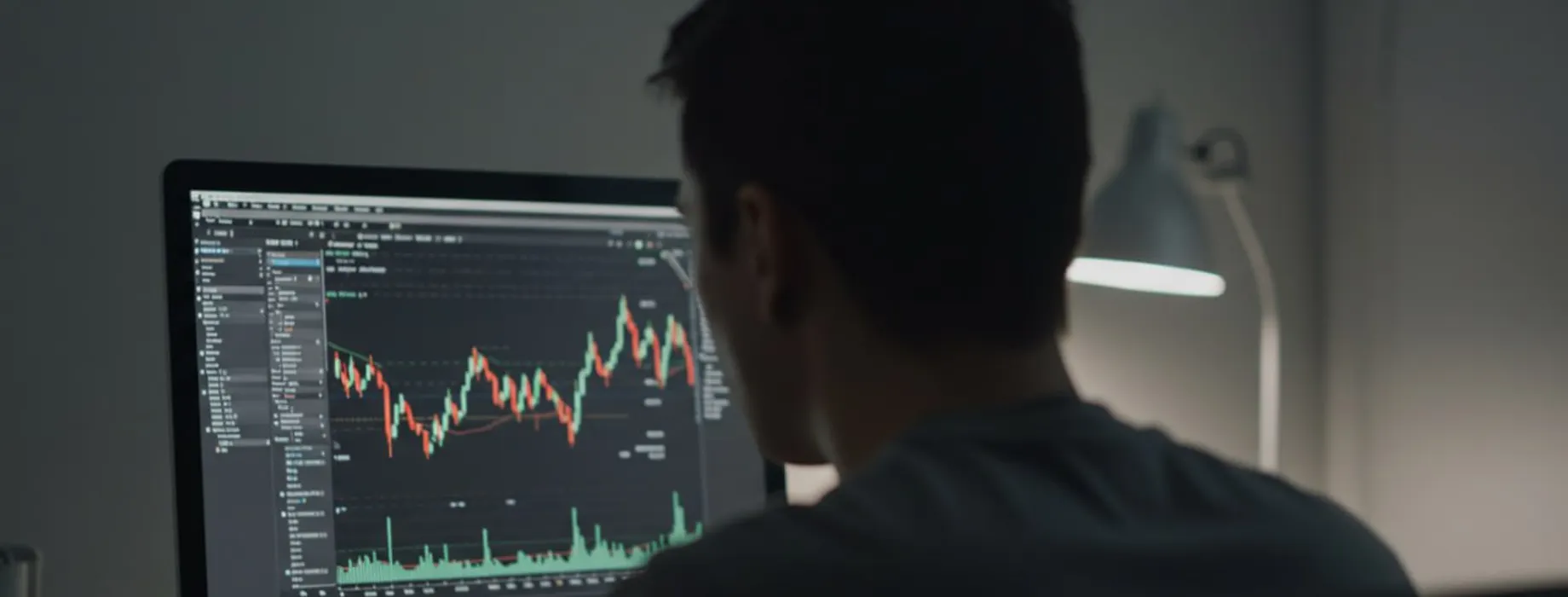- Jigsaw Trading — Professional Order Flow Tools
- Bookmap — Market Depth Visualization Platform
- CME Group: Market Microstructure Resources
- The Microstructure Approach to Exchange — Maureen O’Hara (book)
- TradingView Order Flow Widgets (for basic retail analysis)
Market Microstructure: Order Flow and Level 2 Data Analysis

Understanding market microstructure is no longer optional — it's a competitive necessity.In today's fragmented, high-frequency-driven markets, price alone tells you little. To truly understand where the market is going, you must observe how it moves — in real-time — by dissecting order flow, Level 2 data, and tape prints.Most traders stare at charts.
Article navigation
- 🔬 What Is Market Microstructure? A Practical Definition
- 📥 Order Flow Analysis: Tracking Real Intentions in the Market
- 📊 Level 2 Data: Reading Market Intent Through Depth
- 🎯 Tape Reading: Time & Sales Decoded
- 🏦 Identifying Institutional Activity: Spotting the Unseen Giants
- ⚠️ Limitations & Misinterpretations: Don’t Let the Tape Lie to You
- 🧾 Conclusion: From Surface to Structure
- 📚 Sources & Tools
Advanced traders study what happens behind the charts.
Market microstructure reveals the raw mechanics of price formation:
Who’s buying? Who’s absorbing? Where is liquidity stacked or being pulled?
This guide will walk you through the tools and mindset needed to read the market from the inside out — from interpreting depth-of-book data, to identifying institutional activity, and even detecting when the order book is lying.
If you’ve ever been confused by sudden price reversals or fake breakouts — you’re about to learn why they happen and how to see them coming.
🔬 What Is Market Microstructure? A Practical Definition
Market microstructure is the study of how markets actually operate beneath the surface — not just how prices change, but why and through what mechanisms they move.
It focuses on the process of trade execution, the behavior of different types of market participants (retail, institutions, market makers), and the structure of the order book itself.
This includes:
• How buy and sell orders are matched
• How liquidity is provided or withdrawn
• The impact of order types (market, limit, stop, iceberg, etc.)
• The effect of latency and speed on trade execution
• The dynamics between quote-driven and order-driven markets
🔍 Why It’s Critical for Active Traders
Charts show you what happened.
Microstructure tells you what’s happening right now.
By studying real-time order flow and market depth, traders can:
• Distinguish real interest from noise
• Spot absorption zones and stop runs before price reacts
• Avoid traps set by algorithms using spoofing or liquidity bait
In other words, it’s the closest thing to seeing intent in a digital marketplace.
📥 Order Flow Analysis: Tracking Real Intentions in the Market
Order flow analysis is the backbone of market microstructure.
While price charts show outcomes, order flow shows actions — who’s buying, who’s selling, and with what level of urgency.
At the core of this concept is one distinction:
💡 Market orders reveal intent. Limit orders reveal positioning.
🧾 Key Components of Order Flow:
1. Market Orders
Executed immediately at the best available price.
They indicate aggression — someone wants in or out now, regardless of slippage.
2. Limit Orders
Placed at a specific price, waiting to be filled.
They show liquidity and resting intent, but not urgency.
3. Aggressors vs Passive Participants
An aggressor is the trader who crosses the spread (with a market order).
A passive participant provides liquidity (with a limit order).
🔍 Why It Matters:
• Rising market orders into thin liquidity = breakouts
• Heavy limit absorption at key levels = reversal zones
• Sudden pull of limit orders = spoofing or trap setup
By watching the speed, size, and sequence of orders, traders can identify:
• Momentum ignition
• Stop hunts
• Iceberg orders (hidden size split into smaller chunks)
Order flow is where psychology turns into execution. It’s the closest you’ll get to seeing fear, greed, and manipulation in raw form.
📊 Level 2 Data: Reading Market Intent Through Depth
When traders talk about “seeing behind the price,” they often mean Level 2 data — the raw, real-time flow of open limit orders above and below the current market price.
Unlike candlestick charts, Level 2 isn’t about what already happened. It’s about what might happen next — based on where liquidity is stacked, pulled, or hiding.
🔍 What You’re Actually Seeing:
At each moment, Level 2 shows:
• Resting buy interest (bids) — buyers waiting below the market
• Resting sell interest (asks) — sellers offering above the market
• Size — how much is available at each price tier
But don’t mistake it for truth.
Many of these orders are not meant to be filled — they’re there to influence perception, not execution.
🧠 How Traders Use It:
• Liquidity detection: Large size clustered at a price? That level may act as magnet — or wall.
• Fake walls: Orders vanish as price nears = classic spoofing trap.
• Absorption signals: If price hits size repeatedly but doesn’t break, big players may be absorbing behind the scenes.
💡 Mental Shift:
Don’t watch Level 2 as static numbers.
Watch it as a conversation between participants:
Who’s stepping up? Who’s bluffing? Who’s defending a price?
That’s where signal lives.
🎯 Tape Reading: Time & Sales Decoded
While Level 2 shows intent, the Time & Sales window — often called “the tape” — shows what’s actually happening. It’s a real-time feed of all completed trades, tick by tick.
Each entry tells a story:
• Who initiated the trade (buyer or seller)?
• At what size?
• At what speed and price?
🔍 What to Watch on the Tape:
1. Print Size
Large individual prints = institutional activity.
Clusters of small prints = algos slicing orders to stay invisible.
2. Speed of Prints
Rapid-fire ticks = momentum ignition.
Sudden drop-off in tape activity = hesitation or exhaustion.
3. Print Color (if color-coded)
• Green: Buy-side aggressor hit the ask
• Red: Sell-side aggressor hit the bid
• Gray/neutral: Midpoint executions or ambiguous flow
🧠 Tape Reading in Practice:
Let’s say you’re watching a resistance level.
• Tape starts printing multiple large green prints
• Price holds for 3–5 seconds
• Then: burst of small buys, no sellers = breakout confirmed
Or the opposite:
• Massive red prints hit the bid
• Price doesn’t drop
• Indicates absorption — someone’s buying everything quietly = bullish signal
Tape reading isn’t about staring at numbers. It’s about training your eye to detect behavioral flow — moments where someone big is making a move, and everyone else hasn’t caught on yet.
🏦 Identifying Institutional Activity: Spotting the Unseen Giants
Institutions rarely announce their moves.
They don’t chase candles — they build positions quietly, methodically, and with intent.
But with the right lens, you can see their footprints in the data — through order behavior, execution patterns, and strategic masking.
🧊 1. Iceberg Orders: Big Intent, Small Appearance
An iceberg order splits a large order into smaller visible chunks.
You may see 100 contracts printed — but 5,000 are being fed in pieces behind the scenes.
💡 Tip: Watch for price levels where the same quantity keeps printing, but the depth never shrinks. That’s an iceberg.
🎭 2. Hidden Liquidity Pools
Not all orders are shown in Level 2.
Smart Order Routers (SORs) and dark pools allow large players to stay invisible.
Signs of hidden liquidity:
• Price doesn’t move despite aggressive prints
• Large fills occur with no matching visible orders
🕵️ 3. Spoofing & Layering
Spoofing is when institutions fake large orders to manipulate perception, then cancel them before execution.
How to spot it:
• Large bids/asks appear, price moves toward them
• Orders vanish milliseconds before price arrives
Legally gray, but still widely used.
📈 4. Execution Signatures
Institutions execute differently:
• Orders come in at regular intervals (TWAP/ICE algorithms)
• Size is consistent, often odd-lot (e.g., 137, 244)
• They react slower to price but defend levels with size
If you learn to recognize execution signatures, you can often ride with the whale — not swim against it.
⚠️ Limitations & Misinterpretations: Don’t Let the Tape Lie to You
Order flow and Level 2 give incredible insight — but only if you know what you’re looking at.
Many traders misuse market microstructure data by over-interpreting noise or trusting what was never meant to be trusted in the first place.
🚫 1. Taking Level 2 at Face Value
Just because you see 500 contracts at $105.20 doesn’t mean they’re real.
• They can be canceled milliseconds before execution
• They can be part of a spoof
• They can be layered to mislead
Market makers and algos often want you to see them.
🚫 2. Assuming Aggressor = Directional Intent
A large buy doesn’t always mean bullish sentiment.
Institutions may aggressively buy to exit shorts, not build longs.
You’re seeing execution — not always direction.
🌀 3. Overfitting the Data
Some traders try to interpret every tick of the tape.
That leads to noise-chasing and emotional trading.
Remember:
Microstructure ≠ crystal ball
It’s a context tool, not a standalone entry system.
✅ The Right Way:
Use order flow and depth as confluence — to confirm levels, identify traps, or track strength/weakness.
But don’t trade because you saw a red print.
Trade when:
• Tape confirms a level break
• Absorption aligns with a setup
• Liquidity shifts support your directional bias
🧾 Conclusion: From Surface to Structure
Most traders focus on price — few understand how it’s built.
Market microstructure is the blueprint behind the chart.
It’s where orders meet, liquidity shifts, and institutions operate in the shadows.
If you can learn to read order flow, decode tape activity, and interpret Level 2 dynamics — you stop guessing and start understanding.
This isn’t about predicting price.
It’s about being in sync with the forces that move it.
Make microstructure part of your edge.
Practice daily, replay tape, build muscle memory. That’s where consistency starts.
📚 Sources & Tools
FAQ
Is Level 2 data the same across all brokers?
No. Some brokers show aggregated data, others offer direct feeds from exchanges. Always verify how your platform sources its data — especially if you scalp or day trade.
Can retail traders compete using order flow?
Yes — but only if they interpret, not react. You can't beat institutions at speed, but you can track their footprints and trade with their flow.
Is tape reading still relevant with modern algos?
More than ever. Algorithms leave patterns — in volume, speed, repetition, and fill behavior. Tape reading is now about recognizing behavioral signatures, not staring at colors.
How can I learn order flow trading without risking capital?
Use simulators with live market depth. Platforms like Bookmap, Jigsaw, or Quantower offer replay modes to practice reading liquidity without risking real funds.
